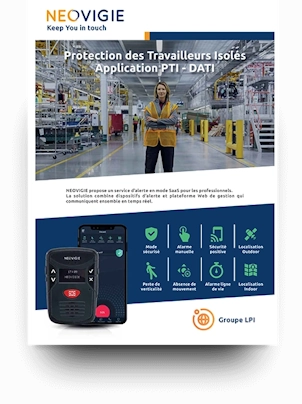
The most common causes of workplace accidents

Workplace accidents: analyzing for better prevention
More or less frequent depending on the industry, workplace accidents involve employees during their working hours and at their workplace. Although they have decreased significantly due to extensive prevention efforts, they still occur, especially in the industrial sector.
The most frequent causes of workplace accidents in companies generally involve manual handling, falls, or improper tool use. However, accidents are also present in other sectors, such as the service industry.
The causes of workplace accidents are numerous, and analyzing them is crucial, both to determine the employer’s responsibility and to improve prevention measures.
The most common causes of workplace accidents
The trend of workplace accidents has evolved significantly in recent years due to changes in job positions themselves. On average, accidents at work concern 34 people per 1000 employees.
Recurring causes
Among the most frequent causes of workplace accidents around the world, 50% are attributed to manual handling of loads. Level falls and height falls account for 13% and 12% of accidents, respectively.
The risks are even higher when the worker is isolated, especially in hazardous industries. Additionally, new sources of workplace accidents have emerged in recent years. Commuting accidents, for instance, have become a significant cause of workplace accidents. Moreover, employers must pay particular attention to protecting employees working remotely.
Workplace accidents can have various causes. Factors such as human behavior, material or technical conditions, and organizational aspects within the company all play a role. These causes are often interconnected. An unforeseen event in the normal work situation, coupled with an inappropriate reaction from the employee or insufficient preventive measures by management leads to an accident. Behavioral aspects must be considered when investigating the causes of workplace accidents and developing comprehensive prevention strategies.
Industry sectors
Certain disparities appear between men and women in terms of exposure to occupational hazards. For instance, certain professions are exclusively male or female. For men, workplace accidents are more frequent in the construction, industrial, transportation, and food retail sectors. For women, they are particularly common in the service, banking, and insurance industries.
Analyzing and preventing workplace accidents
The Ishikawa diagram decrypts workplace accidents. This graphical tool, shaped like a fish skeleton, helps identify all possible causes and their effects, organizing them in a structured manner. For a concrete example of an Ishikawa analysis of a workplace accident, consider a diagram presenting potential causes of a stairway fall: fatigue, time constraints, inattention, poor lighting, etc.

This diagram allows for a comprehensive understanding of the accident, much more efficiently than reading a written report. The tree structure can reveal whether a single cause was responsible for the workplace accident or if it resulted from a combination of various factors.
The diagram serves as a communication tool and an effective educational tool for safety training and awareness. The Ishikawa diagram compiles witness and participant statements, along with an analysis of the location to note any material elements that could lead to risky situations. Factors such as whether the employee was adequately informed about safety protocols and sensitized to risks, clear and appropriate safety instructions, and the presence of faulty or inadequate tools, are all taken into account in the analysis.
Prevention measures
Once the causes of the workplace accident are identified and analyzed, it becomes apparent that each contributing factor played a role in the incident. In theory, eliminating one of these factors should prevent the accident from occurring again.
In practice, prevention actions need to be organized. Only through such actions can risky behaviors be changed and workplace accident rates significantly reduced. For example, to prevent accidents for employees working alone (isolated workers, telecommuters, delivery personnel, traveling sales representatives, etc.), you can opt for a PTI (Protection of Isolated Workers) solution.
A PTI device allows workers to detect fall alerts or other workplace accidents and notify them from a dedicated management portal. Equipped with a PTI device, an employee can quickly request assistance with a simple press of the dedicated SOS button in case of an accident. To ensure its effectiveness, the PTI solution, whether a device or a mobile application, should have a “positive security” feature, verifying the equipment’s status.
For each profession, there are appropriate risk prevention solutions. A rigorous preliminary analysis of the causes and effects is the key to a successful action plan!
August 10, 2023
Léonie Labit


